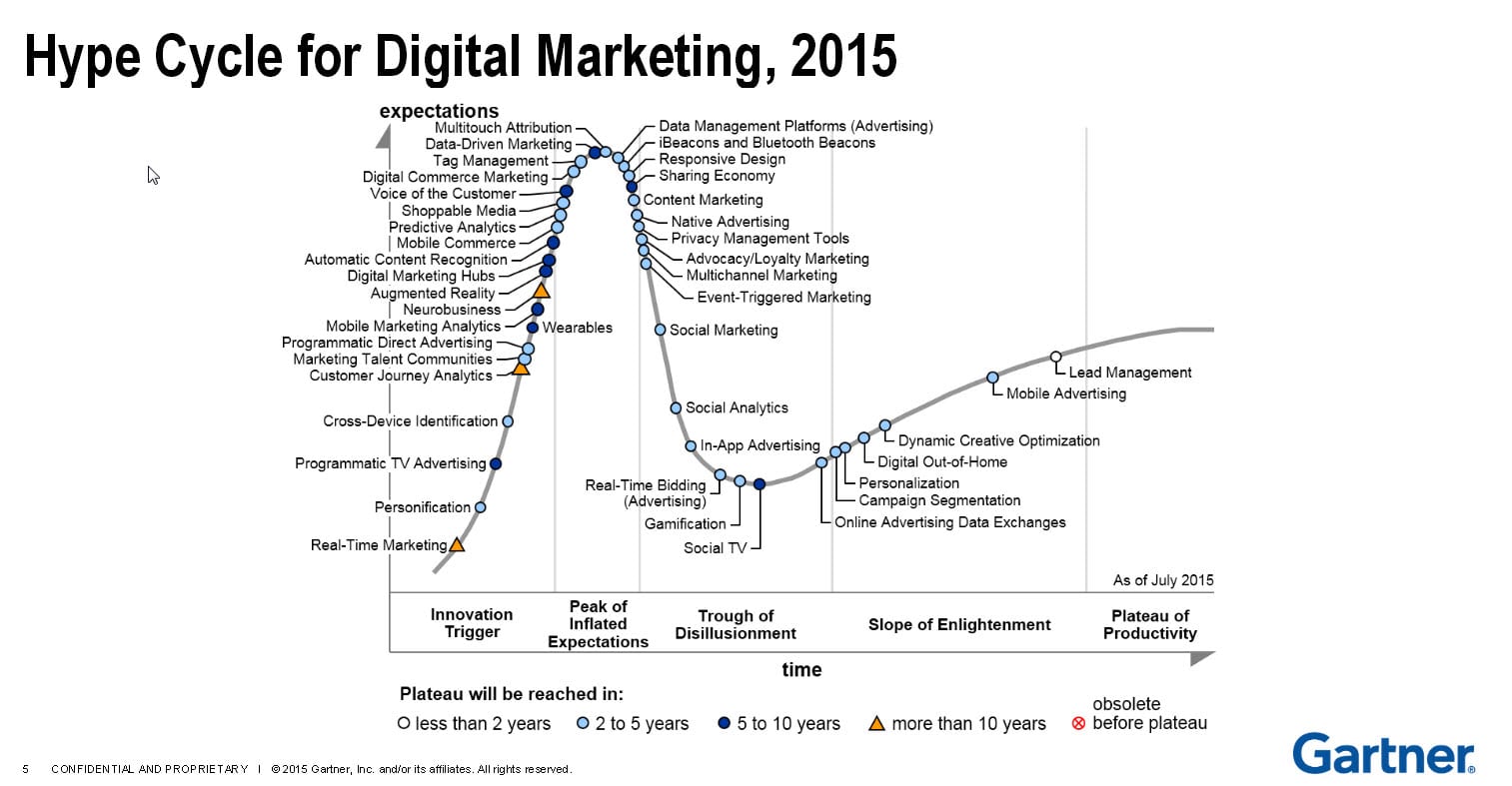

The three most dominant trends include Artifical Intelligence (AI) Everywhere, Transparently Immersive Experiences, and Digital Platforms. They said it wouldn’t last, but the NFT boom marches on, ratcheting up hundreds of millions of dollars in transaction volumes. The sector continues to evolve and grow, with predictions of more record-breaking statistics this quarter. Ten technologies not included in the hype cycle for 2017 include 802.11ax, Affective Computing, Context Brokering, Gesture Control Devices, Data Broker PaaS (dbrPaaS), Micro Data Centers, Natural-Language Question Answering, Personal Analytics, Smart Data Discovery and Virtual Personal Assistants. NFTs are at the apex of the Gartner Hype Cycle for Emerging Technologies 2021. The eight technologies added to the Hype Cycle this year include 5G, Artificial General Intelligence, Deep Learning, Deep Reinforcement Learning, Digital Twin, Edge Computing, Serverless PaaS and Cognitive Computing. From this large base of technologies, the technologies that show the most potential for delivering a competitive advantage over the next five to 10 years are included in the Hype Cycle. The Hype Cycle for Emerging Technologies, 2017 provides insights gained from evaluations of more than 2,000 technologies the research and advisory firms tracks. Virtual Personal Assistants, Personal Analytics, Data Broker PaaS (dbrPaaS) are no longer included in the Hype Cycle for Emerging Technologies.

"Gartner added eight new technologies to the Hype Cycle this year including 5G, Artificial General Intelligence, Deep Learning, Edge Computing, Serverless PaaS. Quite an interesting read, and it details many emerging technologies that it's valuable to be aware of beyond financial technologies such as "Smart dust" and "Brain-computer interface". In 2017, blockchain was headed back downward toward the "Trough of Disillusionment", and cryptocurrencies were no where to be found, signaling (in our mind at least) mainstream acceptance. That last one is a killer.Īnyhoo, in 2015, cryptocurrencies & cryptocurrency exchanges were headed toward the dreaded "Trough of Disillusionment", but in 2016, they were not on the list, but blockchain was headed toward the "Peak of Inflated Expectations". It also details the time frame estimated for mainstream adoption, and this too, includes an amusing sequence: 0-2 years, 2-5 years, 5-10 years, more than 10 years or "Obsolete before plateau". The research details several new or emerging technologies and plots them on a graph relative to where they are in the following cycle: Innovation Trigger, Peak of Inflated Expectations, Trough of Disillusionment (is it just me, or does this sound like dating to you, too?), Slope of Enlightenment (ommm) and Plateau of Productivity. Therefore securing networks requires a holistic approach that incorporates several elements.A friend recently pointed us to the Gartner's Hype Cycle for Emerging Technologies, and we did a look back at 20 cycles and then compared them to the recently released 2017 report. Effective cybersecurity must be multi-dimensional and tiered, as threats can originate from virtually anywhere, target numerous levels of an organization, and sometimes persist for months or years before an information security staff is aware of an attack or breach. government information resources this investment must protect.Īfter completing the course modules you will be able to explain how yesterday’s prevention strategies are no longer adequate for stopping advanced, targeted attacks. This sounds like a large sum, until you consider the scope and importance of the U.S. The Pentagon, for example, has proposed to spend $23 billion on network security initiatives through 2018. The proliferation of hackers, inevitable human errors, bring-your-own-device (BYOD) initiatives, and the ever-broadening need to share information weigh heavily on government and education organizations, and consume substantial resources. If you want to pursue a career in the public sector, the stakes are high as well. After this course, you will be able to describe how the nature of the threat evolves, as culprits employ a burgeoning set of sophisticated tools to take advantage of our growing reliance on networks for critical-data exchange. For example, mobile devices increase convenience but often bypass traditional security measures. Through interviews with industry experts in this area, you will be able to analyze innovations powering the rapid spread of information technology and how they present new challenges for protecting data.

This course is for you if you are interested in transitioning toward a managerial role in cybersecurity and mobility.


 0 kommentar(er)
0 kommentar(er)
